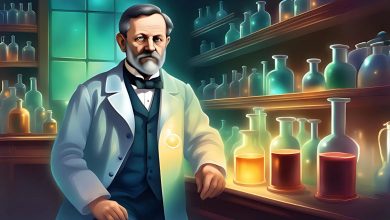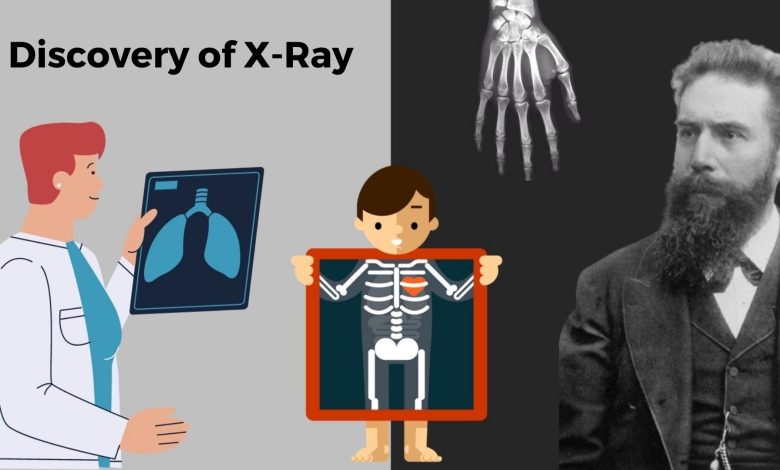
The Scientist Who Discovered the Device That Turns Our Inside Out: Wilhelm Röntgen
In many movies or TV shows, you have come across extraordinary gadgets or comedy elements, such as “glasses help you see people naked”. Of course, these are just fiction for now. But there is a device we all know that allows us to see the inside things: the X-ray machine. It is such a tool that when you hold it inside a wooden box, it can show a metal inside the box, pass through the skin and reveal the image of bones.
Today, we’ll take a look at the discovery journey of this device, which was accidentally discovered by Wilhelm Röntgen and brought him to the brink of insanity!
Great Scientist Expelled from High School: Who is Wilhelm Röntgen?
The high school years of Wilhelm Röntgen, who was born in Germany in 1845, were not easy. He was unfairly expelled from high school for someone else’s cartoon about his high school teacher. Thus, he could not even complete his high school education. He wanted to further develop his interest in research by going to university, but no one was accepting this young man, who did not even have a high school diploma. He eventually received admission to the Federal Polytechnic Institute, now known as ETH Zurich. After receiving his undergraduate degree in mechanical engineering there, he continued his doctorate and later served as a professor of physics at the University of Strasbourg.
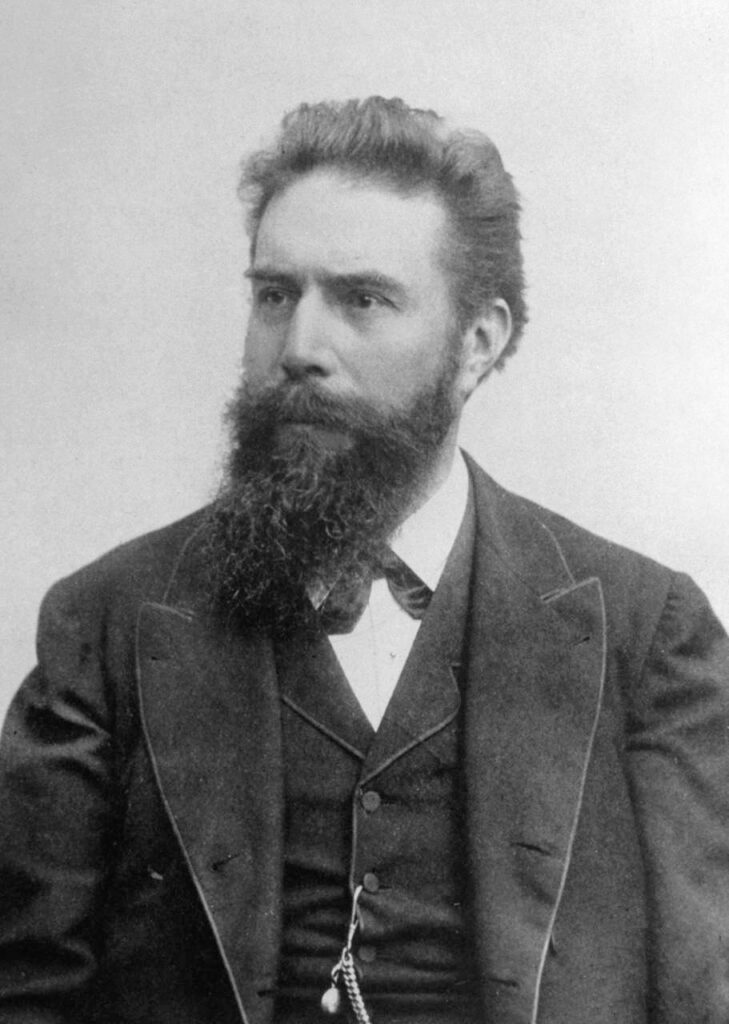
The First Step of Discovery: Doubt
Wilhelm Röntgen was a rather skeptical scientist. One day, he entered his laboratory to try again the experiments that others had done before. The experiment he was going to do that day belonged to one of his colleagues, William Crookes. Thanks to a tube designed by Crookes some time ago, rays called cathode rays were observed and this experiment was a pioneer in the discovery of the electron. The Crookes’ tube consisted of an evacuated glass bulb with two metal plates at each end. When a current was passed between these plates, a beam was observed that suddenly appeared and disappeared. The cause of this visible beam was unknown at that time, but we now know that this beam is an electron beam.
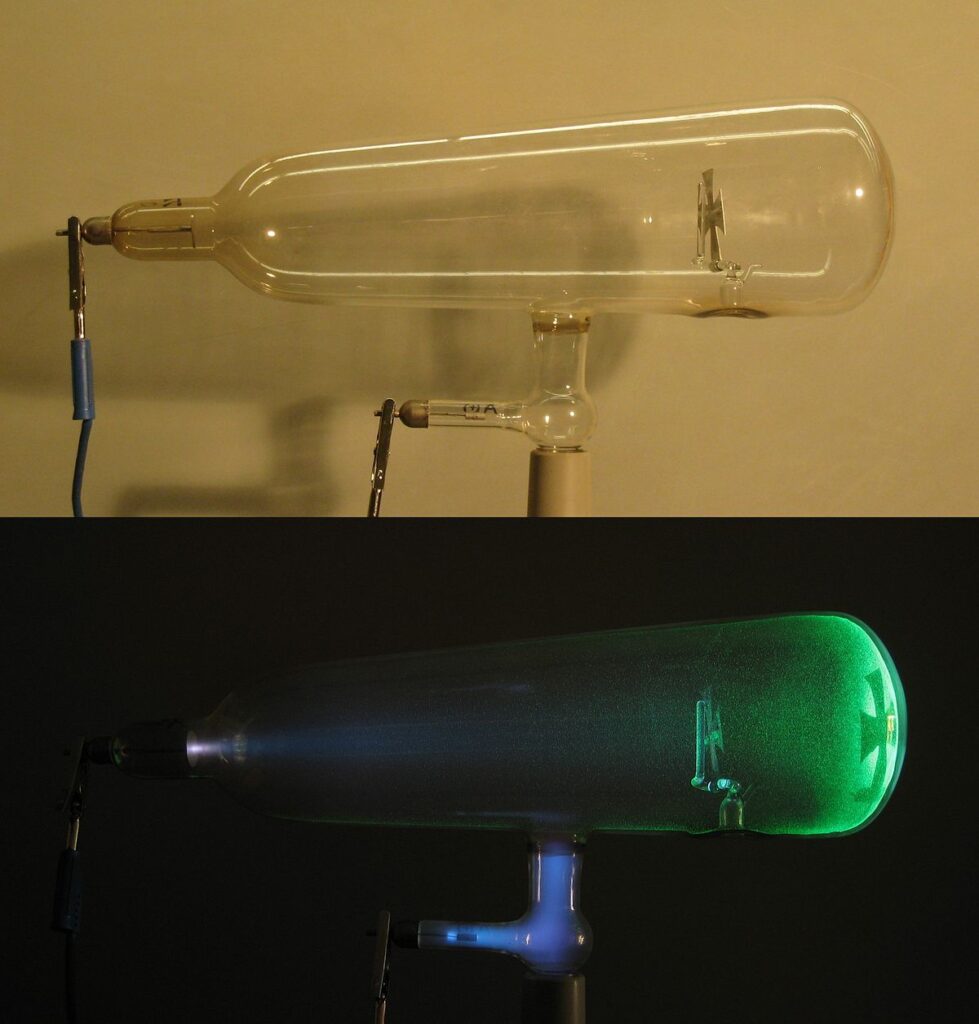
Image Source: Wikipedia
Our skeptical scientist Wilhelm Röntgen had prepared the same setup in his own laboratory. Instead of copying the experiment directly, he made minor changes. First, he opened a small aluminum foil window on the tube and observed that the beam was passing through the foil into the air. After this brief transit, the beam disappeared in an instant. Then he covered the tube with black paper, checking that the beam was only escaping from the foil. He also painted his plates with a luminescent barium compound instead of the phosphorescent light-scattering chemicals his colleagues used. So, Röntgen, who modified the Crookes tube a little more, continued his tests and eventually encountered that unexpected event. Röntgen gave the current to observe the beam moving between the plates. As soon as he turned on the current, the barium plate opposite side began to glow. Thinking there might be an error in the experiment, he checked the setup again. No, there was no leak in the experimental setup. However, the light appeared and disappeared instantly. Because in this experiment, air was the poison of light, the beam had to die before it could reach the opposite plate. He finally thought he was hallucinating. After all, he was not very confident in interpreting light because he was colorblind.
The Key to the Revolutionary Device
Our stubborn scientist was sure that the tube was the cause of this glow. Because the lab was dark and there was hardly any light coming from outside, there was no logical explanation for the beam to pass through opaque black paper. He wanted to test what would happen if he put other things between the beam and the barium-coated screen to block the beam. He took the book in his hand, placed it between the light and the screen, and stared at the screen. What he saw on the screen was a key he used as a bookmark. He now had the key to this revolutionary introspective device.
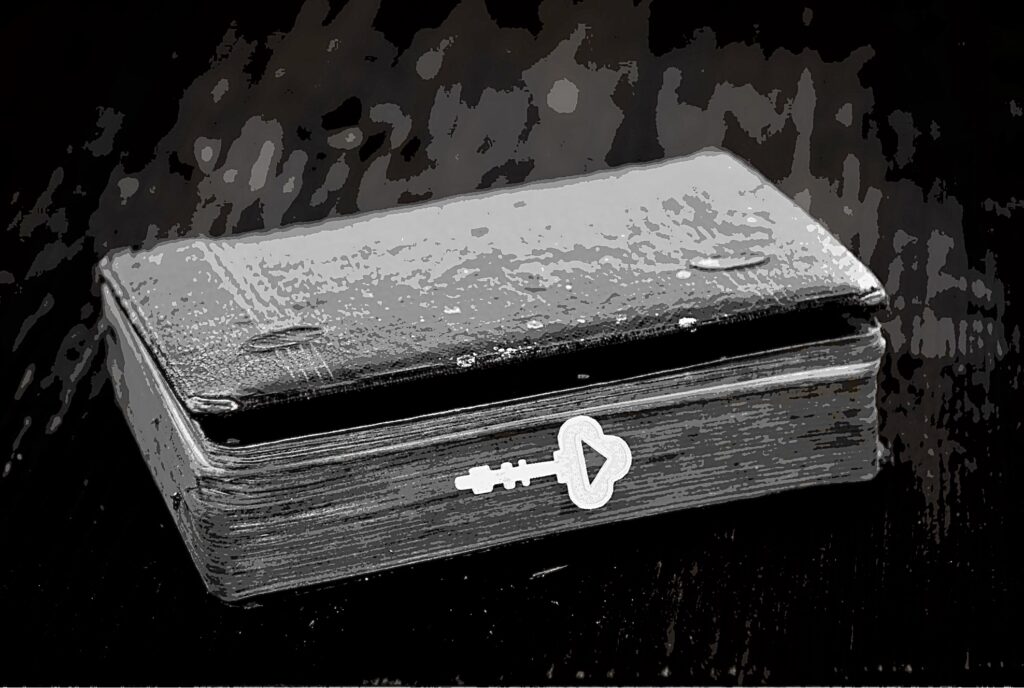
First X-Ray Image in History
Röntgen also tried the insertion process for closed wooden boxes, and the result was the same. This magic device could also reveal the contents of the box. But what really gave him goosebumps was when he felt like black magic had been cast when he grabbed a metal plug: he could see the bones of his hand. At that moment, Röntgen ruled out the possibility of hallucinations and decided that he was completely insane.
Wilhelm Röntgen was both skeptical and stubborn. So instead of jumping to conclusions thinking that he had discovered something that could change the world, he thought he had made a mistake somewhere. He locked himself in his lab for seven weeks to investigate the cause of this error. He fired his assistants, ate his meals reluctantly in his lab, and worked more muttering to himself than talking to his family. He didn’t want to be a revolutionary, he just wanted his result to conform to known physics. Röntgen called this unexpected ray the “x”, which is used to denote the unknown in mathematics. This name, which Röntgen called to be temporary until he understood what this ray was, is still called X-ray or Röntgen ray today. He tried the same experiment over and over with many different things, always getting the same result. After a while, Wilhelm, who wanted to test this condition in other people, invited his wife, Bertha Röntgen, to the laboratory. And in this way, the first X-ray image in history was taken.
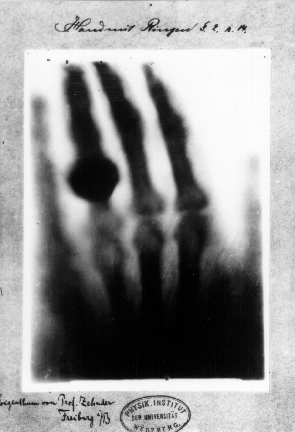
The Hand of Wilhelm Röntgen’s wife Anna Berha Ludwig
Fearing that he had gone mad, Wilhelm was relieved to see his wife’s own bones on the barium-coated plate. His more optimistic wife thought it was a sign of death and refused to enter this haunted laboratory again. This made Röntgen very comfortable. So he wasn’t dreaming and he wasn’t crazy.
Roentgenium
X-rays had been a revolutionary discovery in many fields, especially in the field of medicine. Röntgen, who became the hero of all scientists thanks to this discovery, won the Nobel Prize in Physics in 1901.
Twenty years later, a physicist named Henry Moseley used the same basic X-ray setup to revolutionize the study of the periodic table. People were still so fascinated by the discovery a century later that in 2004, they changed the name of the element 111, the largest element on the periodic table at the moment, to roentgenium.
References and Further Readings
Kean, S. (2011). The disappearing spoon and other true tales of madness, love, and the history of the world from the periodic table of the elements. London: Black Swan.
Vlasov, LN, & Trifonov, DN (1977). 107 stories about chemistry . Moscow: Mir.
Wilhelm Röntgen. (2021, April 14). Retrieved May 09, 2021, from https://en.wikipedia.org/wiki/Wilhelm_R%C3%B6ntgen
You can access the sources of the images used by clicking on the images.
The proofreading has been done by Asu Pelin Akköse and Mete Esencan.
Would you like to support us?
- For more detailed information, you can check our “Support Us!” page!





